Executive Summary
While 2023 got off to a bumpy start for many advisory firms, still smarting from a rough prior year of market returns (and volatile revenue), a relative return to ‘normalcy’ means that for most, the advisory business has reached whatever its new post-pandemic normal will be. Firms that were returning to the office have done so, those that are staying remote are remaining as such, and either way most advisory firms have figured out how to continue to service and retain clients, and are slowly adapting to finding new (or reinvigorating old) paths to grow at least slowly once again. For which the approaching summer season is once again providing its usual respite – a time when most advisors take more time off (if only because clients are harder to pin down for summer meetings as more once again take summer vacations away from home)… and find some time to read and catch up on a few good books!
For those who love to read, though (and especially for those who have limited time and will only get to read just 1 or 2 books over the summer), the perennial question is always “so… what’s a good book worth reading this summer?”
As a voracious reader myself, I’ve always been eager to hear suggestions from others of great books to read, whether it's something new that's just come out, or an "old classic" that I should go back and read (again or for the first time!). And so, in the spirit of sharing, a few years ago I launched my list of "Recommended (Book) Reading for Financial Advisors", and it was so well received that in 2013 I also started sharing my annual "Summer Reading List" for financial advisors of the best books I'd read in the preceding year. It quickly became a perennial favorite on Nerd's Eye View, and so I've updated it every year, with new lists of books in 2014, 2015, 2016, 2017, 2018, 2019, 2020, 2021, and a fresh round last year in 2022.
And now, I'm now excited to share my latest Summer Reading list of top books for financial advisors in 2023, from a new framework in how to think about our “Geniuses” in where we do our best work at work, to how to restructure the way we work for a remote (or at least partially-remote) workplace, how to re-set the growth foundation of the advisory business to be more competitive in an increasingly crowded landscape, a masterpiece on best practices in how to scale a (multi-)professional services firm (remote or in-person!), learning to give better feedback to team members, or migrating our own role in the business to be less advisor and more instructor, manager, or executive leader.
So as the summer season and summer vacations get underway, I hope that you find this suggested summer reading list of books for financial planners to be helpful… and please do share your own suggestions in the comments at the end of the article about the best books you've read over the past year as well!
6 Types Of Working Genius
(Patrick Lencioni)
When a financial advisor first launches their practice, they are the proverbial “chief cook and bottle washer” – responsible for any and every important task in the business, because they’re the only one who can do it! Which in practice usually entails some tasks we are really good at and enjoy, some that perhaps we don’t love to do but are quite competent, and a few that are frustrating and energy-draining. And In turn, those tend to be the tasks that the advisor/founder delegates first and foremost when they reach the point that they’re able to hire!
However, the key to hiring success when it comes to expanding the capabilities of a team is not merely to hire more people to do the expanding volume of work, but specifically to hire those who bring unique strengths to the team, and can complement the advisor/founder’s own weaknesses. Which goes beyond ‘just’ handling the tasks that the advisor wants to delegate, and into how a new team member approaches problems and executes on projects. For instance, the “big ideas” advisor needs a “details” person to help with the follow-through. The advisor who would rather spend time on business development bringing in new clients than do team 1:1s needs someone else to manage the growing team. The advisor who struggles to find and implement new technology needs someone who is good at initiating new projects.
Enter Working Genius. Developed by business management guru Patrick Lencioni (of “Five Dysfunctions of a Team” and “Getting Naked” book fame), the essence of Working Genius is that you can think of any project or business initiative as existing in 6 phases: Wonder (thinking about the current state of affairs and how they might be made better), Invention (generates ideas about how to actually do something new or different), Discernment (figuring out if the idea is feasible/workable), Galvanizing (getting buy-in from the team and rallying them around the idea), Enablement (managing/supporting the team while they implement the idea), and Tenacity (making sure the implementation actually gets done, and achieves the desired result).
The key of reflecting on these 6 phases/types is that by Lencioni’s research, most people are only really good at 2 of them, are usually bad (or at least frustrated and exhausted by) 2 of them, and have 2 that are in the middle (not your favorite thing to do, but reasonably competent to get it done if necessary). Thus the Big Ideas advisor who struggles with the details (high in Wonder, but gets frustrated with the Tenacity phase), or the Business Development advisor who struggles with team management (high in Galvnizing but low in Enablement), or the advisor that gets stuck in existing systems (high in Tenacity but low in Invention). For advisors who aren’t sure, there is a (not free but relatively inexpensive) Working Genius assessment they can take to get a better perspective on themselves.
Ultimately, though, Working Genius is especially powerful not just for individual advisors but in the context of building teams in growing advisory firms (or rounding out the leadership team of a larger advisor enterprise). In fact, the book itself tells the story of a small business owner who has grown a successful advertising agenda but finds himself increasingly unhappy and frustrated in the business… who eventually realizes it’s because he’s a fantastic Ideas person (high in Wonder and Discernment) but is exhausted by doing what it takes to rally the team to his ideas (low in Galvanizing), and consequently re-arranges the roles and responsibilities of his team to let someone else (whose “Working Genius” is Galvanizing) lead the team meetings he didn’t want to be responsible for anyway, to the betterment of everyone. A story that likely could be mirrored in more than a few advisory firms, too!
Managing The Professional Service Firm
(David Maister)
Professional services firms are fundamentally different than other types of businesses like selling products/goods or a technology solution. At its core, the distinction is that professional services businesses are not conductive to the types of standardization (or automation) of tasks that embody most other types of businesses, as the whole point of professionals services is often in its customization of services, along with its high level of individual client interaction. In addition, the delivery of such expert services also requires an ability to attract and retain highly skilled individuals to deliver those services (thus why in a professional services business, it is especially true that “our assets are our people”), and then maximize (or at least, optimize and leverage) the output of those individuals. And the balancing act of the two – high-quality output of services to clients, and high-quality input by attracting and retaining talent – is certainly true for financial advisory firms.
In his seminal book “Managing The Professional Service Firm” (first published in 1997, but absolutely just as relevant today as it ever has been!), David Maister lays out a powerful framework in how to think about building and more importantly scaling and ‘optimizing’ a professional services firm like an advisory business.
The starting point is to understand what type of business the firm is in – the “Brains” business (where clients hire the firm for their unique smarts to solve novel problems), the “Gray Hair” business (where clients hire the firm because it has ‘gray-hairs’ experience in solving their type of problem before), or the “Procedure” business (where the firm has developed its own unique but internally-standardized process to solve an established problem for a certain type of clientele). Which in turn helps to reflect how much staff “leverage” the firm can operate with (“Procedure” businesses can better leverage associate advisor/staff to execute established processes, while “Brains” businesses have to rely almost entirely on their senior partners to deliver services).
Though notably, either can actually drive strong profitability for the firm (as “Procedure” businesses have more leverage but lower price points than “Brains” businesses that charge a premium), such that at its core the best measure of the firm’s productivity is not necessarily its revenue but its “profit per partner”. In fact, while firms can add more partners and teams over time to expand its revenue and reach, arguably the only way that the firm actually improves its margins and scale is to either raise fees, or increase its staff leverage (the amount of tasks that partners can delegate to other team members at a lower rate). Yet at the same time, advisory firms (or any professional services business) can’t increase its partner and teams count unless it in turn learns to either recruit or develop talent (to become future team leaders/partners), which in turn necessitates the development of career tracks and development systems for the business to scale over time.
What follows in the remainder of Maister’s book is a masterpiece in what it actually take to run and scale an advisory business, providing a framework for everything from how to develop career tracks and talent to crafting compensation plans and managing the growth of the firm over time… and highly recommended reading for anyone looking to grow and scale an advice business beyond themselves as the founding advisor.
5 Languages Of Appreciation In The Workplace
(Gary Chapman and Paul White)
It feels good to be recognized for our accomplishments. This fundamental desire to be recognized – by our peers, and our bosses – has over the decades fueled a rise in a wide range of programs that companies implement to recognize success, from “employee of the month” plaques to recognition events (top employees, top producers, etc.), company swag and select prizes to leadership celebrations. Except the reality is that not all good and hard work necessarily rises to such levels of recognition, and when “everything” is recognized for success it can become hollow and meaningless. And at the individual level, often the reality is that we don’t necessarily need to be recognized, per se… we just want to feel appreciated for the work that we’re doing.
But notably, appreciation is not necessarily quite the same thing as recognition. First and foremost, appreciation is driven far more by an individual connection. We might be recognized for our success by getting a plaque from the company, but we feel appreciated when the boss takes a moment, individually and personally, to express gratitude and show that he/she really authentically cares about the work that we’re doing. And from the business context, research is increasingly showing that employee engagement and retention is driven not by how much money people are paid for their work, but more simply whether they feel appreciated for their work.
Except as it turns out, not everyone wants to receive appreciation the same way. Building on their original research in how couples express love and affection – with “The 5 Love Languages” – Gary Chapman and his co-author Paul White explore the different “languages” that employees may want to receive appreciation in the workplace including: Words of Affirmation (verbally thank them for their work), Quality Time (a team outing to celebrate together), Acts of Service (“don’t tell me you care, show me” by offering to help or joining in a project for a bit), Tangible Gifts (tickets to a sporting event), or Physical Touch (obviously limited in the workplace, but might include high-fives or handshakes or perhaps even hugs for those who are comfortable with it).
And notably, in practice most businesses rely on Words of Affirmation (e.g., public or private recognition), but Chapman and White’s research show that only about 45% of employees actually have this as their primary language of appreciation. And for many, they so don’t appreciate Words of Affirmation that thanking them publicly in a team meeting is actually a negative, because they don’t like being in the spotlight! Similarly, while Tangible Gifts (company plaques, tickets, other tokens of appreciation) are also popular, in reality fewer than 10% of employees cite Tangible Gifts are their primary Appreciation language! The end result: one study from SHRM found that 51% of managers believe they are doing a good job of recognizing employees for work well done, but only 17% of their employees agreed.
Ultimately, “5 Languages of Appreciation in the Workplace” provides more formal tools (there is a “Motivating By Appreciation” assessment that the business can use with its team members), but at the least, reading the book provides a very helpful mental framework to think about how to show appreciation to team members (and how to spot what their preferences may likely be simply from their everyday/ongoing interactions in the workplace).
Out Of Office
(Charlie Warzel and Anne Helen Petersen)
While the world was already turning digital, the COVID-19 pandemic accelerated a transformation of people’s relationships with work and what does (or doesn’t) need to be done in a physical office. For many people, even those who already worked remotely, it provided a sharp break in routine, and threw many baseline assumptions of work into question. Most financial advisors had to pivot both how they worked with their clients, as well as advisory firm colleagues around them, whether as a part of a larger broker-dealer or as a small RIA. And though the pandemic has technically ended, there are still many questions in the remote-work world around the intersections of work and life – and how to get the most out of both.
In the book Out of Office, authors Charlie Warzel and Anne Helen Petersen tackle how remote work can repair – or exacerbate – some of the key issues of the standard way that Americans have learned to work. For some, it can give a respite from the social posturing of an office, or it can further isolate those who could benefit from more mentoring and connection. The flexibility of remote work can make it easier to handle mid-day errands and child pick-ups, or it can break down crucial barriers that make it impossible to unplug at the end of the day or week.
As a result, adjusting to remote work isn’t just about doing the same work remotely, it requires a re-assessment of how the work is done in the first place. Which means everything from evaluating whether meetings that have been on the calendar for years (since the days of pre-pandemic in-person work!?) should be changed, to even what needs to be done in a meeting at all (versus recorded and distributed asynchronously via a platform like Loom for the team to view on their own time)? Similarly, firms might re-evaluate what work is truly ‘rigid’ (must be done at a certain time or within certain work hours) or not.
With close examination, firm owners in particular can have a lot of power to mold their days as they reconsider their relationship with clients and/or employees. Though the transformation to a better work/life balance takes time to create, regardless of what it ultimately looks like. In the path there, Petersen and and Warzel encourage guardrails (inflexible barriers that cannot be crossed), not boundaries (that people still sometimes push); for instance, instead of discouraging team members from checking email on vacation by posting an Out-Of-Office message (you know you’ll still be tempted to check the email!), disconnect a vacationing team member’s email altogether, and/or automatically re-route their inbound emails to someone else’s mailbox (who can answer in a more timely manner anyway) so there’s nothing for them to check even if they try!
Throughout the book, Warzel and Petersen include multiple examples of how companies have been creatively adapting and experimenting in the new world of remote work – from building daily check-ins with teams to understand how everyone is doing (when you can’t just tell by seeing them in the hallway heading into the office every morning), to structuring more flexible work schedules where people can set their own working hours around what’s important to them (late-risers can start work later, those who want to work early to be able to pick up kids at the end of the day have the option to do so), and how the companies are manage through the change process.
Ultimately, the key point is that transforming one’s work schedule to take advantage of the flexibility of remote work requires a willingness to question foundational pieces of one’s own process, even – or perhaps especially – those that seem unquestionable. Warzel and Petersen give several technology solutions, such as Loom, Slack, and Front, that those looking to lean into asynchrony so that synchronous time becomes all the more valuable. To that end, though, creating solid “guardrails” that establish the structure necessary for remote work to really work still require some time, funding, and thought… but can give valuable dividends in allowing advisors to be more present in other places of their lives!
Radical Candor
(Kim Scott)
Giving feedback to others is hard. At best, it can be tough to deliver hard news to someone about how they’re not performing well in a way that doesn’t hurt their feelings and damage the relationship. At worst, it sparks anger or defensiveness and an outright backlash at the person giving the feedback. Yet not giving the feedback at all means problem behaviors or poor performance may persist without remedy. Which leaves people in a management or leadership position – who may have to give feedback regularly – teetering and trying to balance between giving candid enough feedback to drive change, but not so candid that team members are alienated in the process.
In her book “Radical Candor”, Scott makes the case that the decision of whether or how candid feedback should be is not just a one-dimensional evaluation – how direct is too direct (or not) – but a two-dimensional consideration of whether or how much empathy the feedback-provider shows in the process. As when someone gives candid feedback without first showing empathy, it can often just show up as “obnoxious aggression”. But once empathy comes into the picture – where it’s clear to the person receiving the feedback that it’s coming from a place of compassion, and that the feedback giver genuinely cares and wants to see them improve – it’s possible to deliver feedback with “compassionate candor”, allowing the feedback to be direct and challenging while still being a positive conversation.
Notably, though, Scott highlights how an overabundance of empathy can also be problematic, leading to a potential outcome of “ruinous empathy” – where the feedback-providers goes so far in trying to protect the feelings of the recipient that they never really actually get the message because it’s couched too softly. The end result: the problem continues to build until eventually it explodes (or leads to a termination)… at which point even the affected person themselves may now respond with “why didn’t anyone tell me this was a problem before now!?” In other words, it really takes genuine empathy and “radical candor” to deliver the feedback that matters.
For those who struggle to find the balance on these – especially when managing growing teams where learning how to give effective feedback really matters – “Radical Candor” provides both a helpful framework to think about how to balance how direct feedback should be, and how to still show empathy (but not too much that it undermines the feedback) in the process. In addition to helpful and very practical tips (Scott was a leadership coach at both Google and Apple and speaks from experience in how to apply the concepts in practice), including the importance of near-real-time feedback (it’s very valuable to take 5 minutes after a meeting to pull someone aside and give them crucial feedback on the spot where applicable), and the value of inviting the team to criticize you (ideally, inviting such feedback “in public” in front of the team) to set a tone and culture of feedback for the whole organization.
Uncharted: How To Navigate The Future
(Margaret Heffernan)
Facing uncertainty is a part of being human that no human enjoys. And as financial advisors, we regularly interact with uncertainty. There is uncertainty in the market. There is uncertainty when we hold space and time for client’s unknowns. But uncertainty spans almost every domain of human life. Which helps to explain why, for as long as humans have existed, humans have chased certainty. In fact, Margaret Heffernan argues that humans could be described as addicted to predictions that bring at least an air of certainty. Yet, Heffernan also argues that when we see the world as predictable, we are also ascribing to a belief that the world is determined. When in reality the world is not determined. There is uncertainty. That’s what opens the door to possibilities.
So if we can’t have determinism and perfect prediction (and arguably do not really even want it, as in such a world, data and algorithms could predict all outcomes, and Heffernan argues we’d simply become slaves to all-knowing AI!?), how can uncertainty be reframed? By actively engage in our lives, constructing and re-building using the knowledge from our past, present, and hope for the future. Which in practice Heffernan suggests is about seeing the future like an artist sees the future: pursuing creativity (which is a plus side of uncertainty) while in and with thoughtful and respectful relationships with others. In fact, this creative process is arguably best done and enjoyed within a relationship (like advisors and clients charting and re-charting potential plans and paths)!
What is so important about artists and their work, according to Heffernan, is that their work spans time. Art is forever-relevant because it does not try to conform to any pre-defined or pre-conceived idea or notion about what people will like or need in the future – be it us or others. To do this work, artists are masters of adaptation. The artist does not try to “future proof” their work, nor guard against change and time. Instead, artists use the most human of traits, adaptation and experimentation. And knowing that we can adapt is a powerful way to live in the face of uncertainty – even more powerful when we know we have a decision-partner to help (like an advisor).
Finally, an artist’s life also requires patience and openness to experiences without an agenda. Human brains, artists or not, need current experiences in order to form the memories that we use to navigate our futures. In fact, variety without any goal or need for confirmation in those experiences is the point. Just having the experience and storing away the memory is the end purpose. The artist does not always know when they will need it or how the experience turned memory will manifest into something, but they are open to possibility and trust that things will coalesce into new, brave ideas.
Notably, though, this approach can change the fabric of what it means to do “planning” as an advisor. As it implies that we should stop planning (recognize the uncertainty of trying to do so anyway!?), and instead focus on how we are moving towards a mission. This could be understood as having a statement of financial purpose or a financial motto and start with the statement or the motto, instead of starting with a goal or a project plan.
In practice, Heffernan’s “Uncharted” was written for CEOs and how they run companies (and think about using projections in the face of business uncertainty). However, her words, stories, and ideas are arguably for everyone, and have high relevancy for financial advisors who similarly cannot promise certainty and have to help clients face their own uncertainties For which shifting the goal of the relationship from certainty, to collecting experiences together in order inform and then live more fulfilled futures, sounds not only more fun, but is a promise advisors can perhaps better deliver on?
Wild Problems
(Russ Roberts)
For most of the past 20 years, the bulk of an advisor’s work came down to investment portfolios and financial planning software, and how the growth of the former was impacted the ability to achieve goals articulated in the latter (and the spreadsheet projections of whether and how clients were or were not on track to reach those goals). Yet, in the modern era of planning, growing the portfolio value to achieve goals is just one piece of the value framework that advisors offer clients. As such, advisors may find themselves sitting across clients with much thornier questions much more frequently – questions that cannot be solved by a spreadsheet, but instead prompt conversations about values and self-fulfillment.
In the book Wild Problems, economist and professor Russ Roberts refers to these issues as “wild problems”: issues that cannot be measured or solved with a spreadsheet, algorithm, or one’s problem-solving mechanism of choice. Unfortunately, wild problems cannot be ignored, either. In fact, they are some of the most crucial questions to our selves and lives. These are questions of who to marry, whether or not to have children, where and how to retire, and so on. Roberts resists laying down hard-and-fast rules, and instead tries to create a mental framework on how to work through these problems productively (rather than spiraling and letting the window of opportunity close!).
Notably, on top of the issues laid about above (that wild problems are immeasurable and difficult to ignore), one of the biggest issues with wild problems is that it’s difficult to actually know what our future selves will want or prioritize. For instance, a client may have a dream of retiring in Europe, but, having never experienced living there day-to-day, struggles to conceptualize all of the ins and outs of that future life. To fill this gap, Roberts recommends leading with principles, and who you envision your future self to be. Failing that, capturing microcosms of the experience (such as in a 2-week trip to Spain) can be helpful. Yet while those smaller experiences can at least partially close the gap, Roberts ultimately promotes a quantity over quality mindset: try a few different options lightly, discover what’s actually important and matters to you, and then using what you’ve now realized (perhaps for the first time) the measuring stick should be, “satisfice” your way to contentment.
Ultimately, for advisors trying to get clients unstuck, the biggest lesson may be in Roberts’ overall attitude that while these decisions about thorny Wild Problems are defining, very few of them are truly permanent. Advisors can take a step back from being responsible from helping clients determine the most ‘optimally fulfilling’ decision, and instead focus on enabling clients to try many different things – then pivot the plan based on their findings! After all, in Roberts’ perspective, it is less the course that one’s ‘wild solution’ takes you down in the course of life, and more the exploration – and what that exploration teaches us about ourselves – that ultimately informs a life that is rich in a multitude of ways.
The Family Firm
(Emily Oster)
One way to look at the experience of parenting is as an endless series of decisions needing to be made. Being responsible for the safety and development of a child means providing direction and guidance, as well as defining rules, boundaries, and pathways, for virtually every aspect of the child’s life – and because there’s not (yet) any definitive user’s manual for raising a child, it’s ultimately up to the parent in most cases to make each final decision.
Obviously, though, not all decisions have equal importance: the question of whether or not to allow a child to go to their first slumber party at a friend’s house, for example, likely won’t have the same long-term impact as whether to start kindergarten at age 5 or hold them back another year. However, some decisions do have greater importance than it would appear on the surface. For instance, the difference between a child taking ballet lessons on Tuesday nights versus playing soccer on Saturday mornings can have a significant impact on the daily routines of the parent(s) responsible for transporting them to and from those activities (and choosing both activities can result in a lot of the parents’ and child’s time – which is already scarce when the child is in school and the parents are working – being eaten up solely by shuttling back and forth between various activities!). Without some way of planning out the long-term effects of big decisions, it’s easy to stumble into actions taken for short-term convenience (e.g., to please the child who has their heart set on a particular activity) that cause dissatisfaction for everyone in the long term when day-to-day reality comes out of alignment with the parents’ (and children’s) values.
Brown University economics professor Emily Oster has written extensively on parental decision making in her previous books Expecting Better (tackling decisions made during pregnancy) and Cribsheet (focusing on the infant and toddler years). But whereas those books often focused on the what in decision making – assessing reams of existing research to make sense of thorny questions where folk wisdom or media narratives often mislead bewildered new parents – Oster’s latest book, The Family Firm, is more about the how. Because compared to early parenthood, where most parents face a fairly similar set of decisions around issues like breastfeeding, sleep schedules, and potty training, as kids reach school age the number of possible types of decisions grows exponentially: Where and when to start school, what types of activities to enroll in, when to set lights-out, how rigidly to structure free time, and so on. With comparatively little hard data on any of these topics to inform parents on what decision to make, then, it’s more important to have a framework for how to make a decision that stays consistent with the values the parent wants to instill in their kids.
To this end, Oster introduces what she calls the “Four Fs” framework for making parental decisions: Framing the question (e.g., understanding what the decision is really about, and what options are on the table); Fact-finding (pulling together all the data needed to make the decision and thinking through the potential ramifications of each option); Final decision (setting a drop-dead deadline to make the call); and Follow-up (having a process to reassess the decision at a later point and examine if it’s working out as intended).
What’s notable about the Four Fs from a financial advisor perspective is that they can be applied to almost any significant decision in life – not just those around parenting. The framework could just as easily be used by someone deciding whether or not to pursue a particular job opportunity, move to a different city, or even how to spend time in retirement. So for advisors who like to act as a ‘thinking partner’ for their clients around big financial and life decisions, the Four Fs serves as almost a ready-made conversation to help guide someone through an informed decision. Because ultimately, while data can often only take us so far in knowing what the ‘right’ decision may be, we can still take steps to make a smart decision that increases the chances of an outcome that we’re happy with!
Atlas Of The Heart
(Brené Brown)
As a growing body of research recognizes the role of psychology in financial behavior and decision making, and with CFP Board now including Psychology of Financial Planning among its Principal Knowledge Domains included in the CFP exam, advisors are increasingly seeking ways to have productive conversations with their clients around their values, thoughts, and feelings surrounding money.
However, the challenging reality is that these conversations can be fraught with emotion: Money often triggers feelings ranging from contentment to gratitude to anxiety to envy (and sometimes all of these feelings – and more – at the same time). However, the way that society discourages people from talking about emotion – particularly where money is concerned – means that many individuals lack an extensive vocabulary with which to describe their emotions. Often, a few simple terms like “happy”, “sad”, “angry”, and “afraid” shoulder most of the burden of describing the complex web of interconnected (and occasionally conflicting) feelings and thought processes that make up any given emotional state – which ultimately proves inadequate in effectively communicating the speaker’s true experience.
Which is problematic because psychologists often emphasize the power of naming emotions as a first step towards being able to deal with them in a healthy way: While many of our emotions come from our lower-level ‘lizard brain’ that controls our basic survival instincts, thinking about them in terms of language moves the thought process to higher-level areas of the brain, leaving us more primed to reason our way through emotional situations. Accordingly, in Atlas of the Heart, professor, speaker, and leadership consultant Brené Brown takes on the task of naming and describing 87(!) different distinct emotions in an effort to map out the human emotional experience, drawing from data in the growing field of emotional research and using stories from her own and others’ experiences to fill in the gaps.
Further, as Brown highlights, more recent research has shown that “having the correct words to describe specific emotions makes us better able to identify those emotions in others” – in other words, when people are able to put their own emotional experience into words, they not only improve their ability to identify and manage their own emotions, but they also become better at recognizing other peoples’ emotional states as well!
Ultimately, conversations around emotional topics can be a slippery slope: Although it’s natural to want to express empathy and share in the joy or sadness of a client who is dealing with particularly powerful emotions, getting too entangled in the client’s emotional state – to the point of the advisor taking on their client’s emotions as their own – can be an impediment to giving clear and objective advice. Yet going too far in the other direction, and becoming completely disconnected from the client’s feelings – or even worse, giving off an appearance of judgment or pity towards the client’s emotional state – can create a barrier to the type of personal connection that can be the foundation of a trusting client relationship.
And so as Brown stresses throughout the book, having access to language describing emotional experiences can help us forge connections by understanding and relating to each other’s experience – without becoming counterproductively entwined in the other person’s emotions ourselves. For which Brown also provides tools for readers to not only recognize and deal with these emotions in themselves, but also to identify emotions that others may be going through – and therefore better relate and connect with one another.
Uncomparable
(Kristen Luke)
As Harry Beckwith first pointed out in his seminal “Selling The Invisible” book years ago, it’s incredibly hard to sell an intangible service like financial planning advice. As with traditional goods, people can at least go to a store and “try it out” – they can pick up and hold and examine a tangible item – but when it comes to services, at best perhaps one can rely on the reviews and testimonials of others, though in the end we’ll never really now until we try it for ourselves. Which can feel like an expensive and high-risk proposition for a prospective client… and often just results in inertia instead.
The added challenge is that as more and more financial advisors offer fiduciary financial planning customized to their clients’ needs and objectives based on their credentials and years of experience… consumers can’t even distinguish one from the next, because every financial advisor seemingly offers that substantively similar value proposition. From local firms to national brands, “everyone” is going all-in on financial planning… which is great for consumers getting more access to financial planning, and the growth of the financial planning profession, but terrible for any individual advisor trying to stand out in a sea of sameness and leading to a ‘crisis of differentiation’ for financial advisors.
In an attempt to demonstrate at least some differentiation, many advisors try to make the case that they are “incomparable” – i.e., they are excellent-beyond-compare, providing above-average quality and above-average service for a below-average price to substantiate their value… and in the process, eroding their profit margins and business sustainability by trying to commit to do too much for too little. For which Kristen Luke presents an alternative solution: instead of trying to be incomparable, try being uncomparable instead!
What’s the difference? Incomparable means being so good that you’re ‘beyond compare’ (past the competition), while being uncomparable simply means that what you offer is to unique and different that there’s no one to compare it to in the first place. Which is an important distinction, because incomparable businesses face constant price pressure to show they’re continuing to deliver more value for less cost (and struggling to do so profitably), but uncomparable businesses don’t get price-shopped because there’s no one offering a similar service to price-compare them to in the first place!
So how does an advisory firm become “uncomparable” to get away from the price-shopping client? In a word: niching. Because the advisor who offers a specialized service for a specialized clientele is the epitome of differentiated – offering something so different that other advisory firms couldn’t replicate it (at all, or at least not cost effectively) even if they tried!
What follows in the remainder of the book is a primer for those advisors who want to pursue a niche or specialization – either in starting from scratch, or pivoting there from their existing firm – from how to select a “good” niche to pursue, how to position yourself to the community, how to establish and demonstrate your specialized expertise, and a year-by-year plan over the first 3 years of the business until it gains full traction.
So for any advisors who are struggling with waning organic growth rates that want to get growth reignited – or new advisors who want to get started on the right foot out of the gate – Uncomparable provides the roadmap of how to get there. (With the caveat that even when done right, it still takes time!)
The Effective Executive
(Peter Drucker)
The traditional view of leadership is that those are especially good at doing something eventually become managers of other people who do that thing, and over time if/when/as the organization expands further, may become leaders – executives – whose role is to lead the managers (who in turn manage the do-ers). Notably, in this framework, executives are often at least 2 (and sometimes even more) steps removed from those who actually “do the work”, but the executives in turn are the ones who bear all the responsibility for making the decisions about how the business will marshal its resources to accomplish business goals (and then actually executes those plans to move the team and business forward). Which means that at a certain size and scope, leadership goes beyond ‘just’ doing or manage the people who do the doing, and instead is about the meta-level of how to move and entire division, organization, or business enterprise forward.
Yet while there’s a lot of guidance and instruction out there about “How To Be A Great Boss” and how to manage people, there’s remarkably little about how to be an “Effective Executive”… except, perhaps, for the seminal book on the subject, by the great management guru Peter Drucker. Who highlights how, in the end, being an Effective Executive isn’t about having natural charisma (in fact, some of the most effective executives, like Harry Truman, were not very charismatic at all), or a naturally-born skillset, but instead is about practicing skillsets that can be learned and practiced. All focused around what Drucker describes as the 8 core capabilities of executives: asking “what needs to be done?”, asking “what is right for the enterprise?”, developing action plans, taking responsibility for decisions, taking responsibility for communicating the decision, focusing on opportunities, running productive meetings, and thinking with a “we” frame (rather than “I”). Because the reality is that when it comes to the modern era of “knowledge workers”, the biggest impact for an organization is not whether work is getting work, but whether the right work (that actually moves the business forward) is getting done.
Accordingly, Drucker’s “Effective Executive” focuses entirely on what people in positions of Executive leadership can do to actually execute – ensuring that “things get done” (as an organization, not just individually), and that the things being done are the right things to grow the business. Which Drucker boils down to 5 essential practices: 1) proactively managing their time (including creating systems to track exactly where their time is going, to ensure it is being spent on the highest and best uses that really advance the business); 2) focusing on results and outcomes (not just whether work is getting done and activity is happening); 3) building on strengths of what they’re good at (and hiring around themselves or delegating the rest, instead of trying to shore up their weaknesses); 4) further concentrating their attention on the few areas where their superior capabilities can produce outsized results or impact (i.e., truly setting what is a priority that drives the outcomes); and 5) making “effective decisions” (and recognizing that doing so is not necessarily about getting a consensus but taking dissenting opinions to make the “right” decision).
Ultimately, Drucker’s “Effective Executive” is a best fit for those who find themselves in positions of growing leadership – especially in organizations that have at least 3 layers (do-ers, managers, and executives), and are either trying to figure out how to be more effective executives, or want to begin to hone their skillsets to be able to move up to the executive level in the future.
From Strength To Strength
(Arthur Brooks)
When asked about what it means to “be old”, the most common response of Americans was “turning age 85”. Yet the hard reality across a wide range of human feats and accomplishments is that high-skill professionals begin to face a marked decline somewhere between their late 30s and early 50s. The decline is most obvious in domains like professional sports (where it’s rare in almost every sport to see athletes remain competitive past their mid-30s), but researchers studying knowledge workers have found a similar phenomenon; prizewinning scientific discoveries and key inventions overwhelmingly occur by those in their 20s and 30s, and in more recent years the peak has extended slightly (as the sciences become more complex and require deeper knowledge just to find the new edge frontiers) but decline is still readily evident by the time scientists reach their 50s. And notably, in the investing domain, at least one study suggests the peak may still be as early as our late-30s.
Yet the reality is that while one set of skills begin to decline as we age, there is another domain that rises. For instance, we continue to build our vocabulary throughout life (making us better at learning/expanding languages, and also at playing Scrabble!), and those who are older and more experienced may be less innovative around creative new concepts but show more able to synthesize existing complex ideas together. Thus, for instance, why historians – who spend a career lifetime gathering facts and data to gain better perspective on the past – buck the general trend of professional decline, often not peaking until nearly 40(!) years after their careers begin (which means someone who gets their history Ph.D. at age 30 may still just starting to hit their peak in their early 70s!).
From the psychology perspective, the distinction between these two is the difference between “fluid intelligence” (flexible thinking to solve new problems) and “crystallized intelligence” (our ability to leverage knowledge we’ve accumulated in the past). Or as Brooks states it more simply (drawing from Raymond Cattell who originated the research): “When you are young, you have raw smarts; when you are old, you have wisdom. When you are young, you can generate lots of facts; when you are old, you know what they mean and how to use them.”
The significance of this phenomenon, from the context of professional growth (and navigating the ‘inevitability’ of professional decline), is that the key to success is transitioning “from strength to strength” (per the title of Brooks’ book) – to shift one’s professional focus in your 40s and 50s from relying on your fluid intelligence to leveraging your growing base of crystallized intelligence instead, to do less innovation and more instruction (thus why the best-rated professors are often the oldest in their 60s and 70s).
Ultimately, “From Strength To Strength” is written for those who are staring down the coming of (or may already be experiencing and struggling with) the decline in fluid intelligence that comes in our 40s and 50s, and about how to change your own mindset (and time and professional focus) to make it not a time of decline, but simply a path of reinventing oneself to leverage the strengths that come from age, experience, and wisdom. Which arguably is especially relevant in the domain of financial advisors, where advisors naturally accumulate wisdom and experience, and a growing base of both clientele and teams of advisors and other staff who may benefit from an experienced advisor’s wise counsel.
If you’re still looking for more book ideas, be certain to also check out our prior summer reading lists, along with our overall list of recommended books for financial advisors. They may be lists we've published in the past, but if you haven’t read the books yet, they're still new to you! 🙂
Top Must-Read Books for Financial Planners
2022 Summer Reading List of “Best Books” For Financial Advisors
2021 Summer Reading List of “Best Books” For Financial Advisors
2020 Summer Reading List of “Best Books” For Financial Advisors
2019 Summer Reading List of “Best Books” For Financial Advisors
2018 Summer Reading List of “Best Books” For Financial Advisors
2017 Summer Reading List of “Best Books” For Financial Advisors
2016 Summer Reading List of “Best Books” For Financial Advisors
2015 Summer Book List For Financial Advisors
2014 Summer Reading List Of Best Books For Financial Advisors
2013 Summer Reading List Of Top Financial Advisor Books
So what do you think? Will you be reading any of these books over the summer? Do you have any suggestions of your own that you’re willing to share? Please share your own great reads in the comments below!





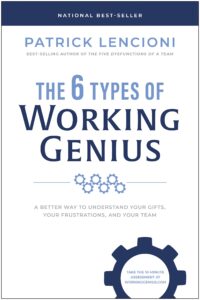
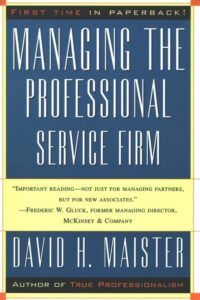
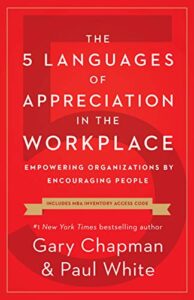
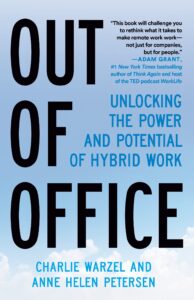
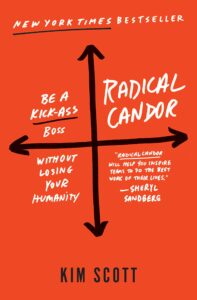
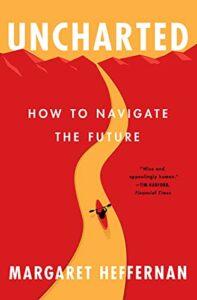
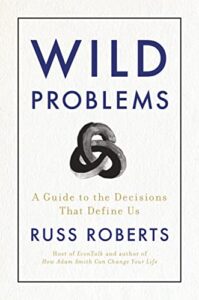
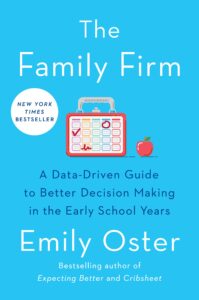
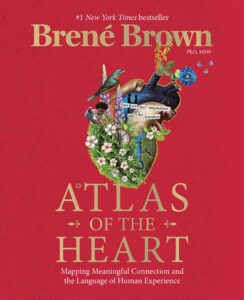
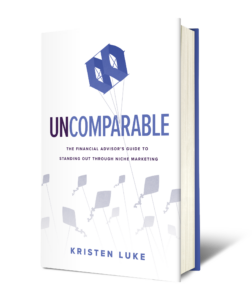
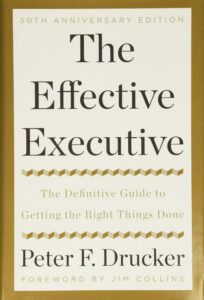
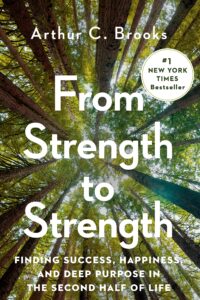



Leave a Reply